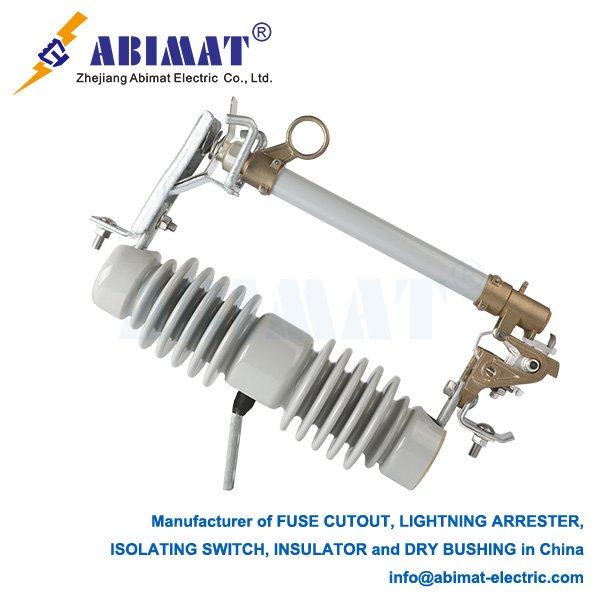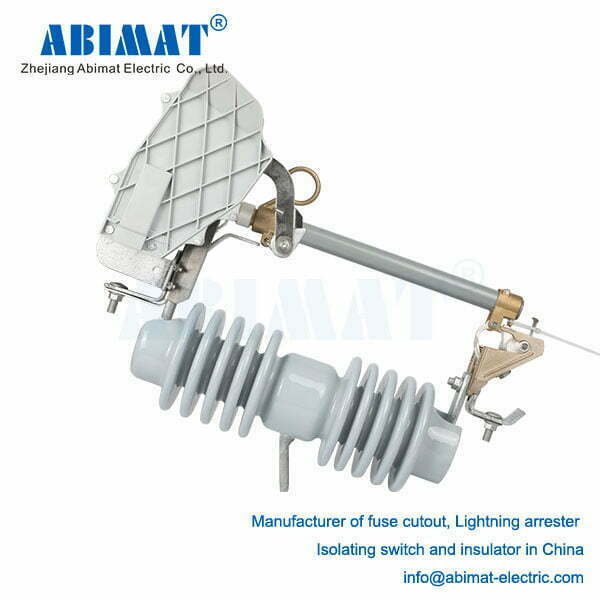Polymer-Housed Fuse Cut-Outs: Distribution Network Protection
Fuse cut-outs are the primary means of protecting against overcurrent in medium-voltage power distribution systems. They are typically used on transformers, feeders, and capacitor banks. Polymer-housed fuse cut-outs are now the most common; they have replaced porcelain ones due to their better performance and higher safety.
A polymer fuse cut-out consists of several components. For example, there is the silicone rubber housing, which insulates, supports the device, and provides weather resistance. Then there is the pivoting fuse carrier, which holds the replaceable fuse link that limits current. There is also the base bracket, a hinged component that allows the carrier to drop down. Additionally, there are electrical contacts: upper and lower terminals for connecting to the circuit. The fuse link itself is critical—it responds to current and is set to operate at specific protection levels. When excessive current flows for an extended period, the fuse link melts, causing the carrier to pivot downward. This creates a visible gap and interrupts the circuit.

Polymers offer numerous advantages. For one, they do not shatter—their structure remains intact without breaking into pieces or exploding when they fail. They also handle dirt and grime effectively. The silicone material, as you may know, is inherently water-repellent, preventing the formation of conductive films even in coastal or industrial areas. They are much lighter too—about 70% lighter than other types—making installation easier and reducing strain on the poles they are attached to. They can withstand impacts; a hard knock will not cause them to fall apart. They are also highly resistant to sunlight, enduring long exposure without significant damage such as tracking or erosion. Moreover, they require less maintenance: their self-cleaning surfaces mean dirt is less likely to cause problems.
When selecting a polymer-housed fuse cut-out, several factors need consideration. The voltage rating is important—it should match the system’s operating voltage, such as 15.5kV or 27kV. Then there is the current rating, which refers to the continuous current it can handle, for example, 100A or 200A. Interrupting capacity is another key factor: it is the maximum fault current the device can interrupt, such as 12kA or 16kA. BIL (Basic Impulse Level) indicates the lightning voltage it can withstand—110kV or 150kV, for instance. Creepage distance, the leakage path, is set to handle dirt and grime in accordance with IEC 60815 standards. Mounting method also matters; they can be installed horizontally, vertically, or at an angle. Additionally, the fuse’s operating characteristic is relevant—it can be slow-acting (T-type) or fast-acting (K-type), depending on the application.
These fuse cut-outs comply with major international standards. For example, they adhere to IEC 62271-111 and IEEE C37.41, which set guidelines for the design and testing of cut-outs. They also meet IEC 60282-1, which covers the performance of medium-voltage current-limiting fuses, and IEC 62217, the standard for testing polymeric housings.
Rigorous testing ensures their reliability. Electrical testing includes checks with regular power frequencies and rapid electrical impulses. Mechanical testing evaluates the drop-out functionality and resistance to repeated loading. Environmental testing assesses performance under harsh conditions such as salt fog, ice accumulation, and prolonged sunlight exposure. Furthermore, fault interruption capability is verified to ensure they can stop faults when they occur.
They have a wide range of important applications. They are used on overhead power lines operating at 4kV to 38kV, protect the primary side of transformers, function at feeder branching points, and safeguard capacitor banks.
In summary, polymer-housed Abimat fuse cut-outs are crucial for protecting distribution networks. They can stop faults, indicate when they are isolated, and perform well in various environments. All of this, as you know, stems from the advanced silicone rubber used in their manufacture. These features make them safer and more reliable—traits of great importance. To obtain the best protection for the power grid, it is necessary to choose the right fuse cut-out. When making a selection, attention should be paid to its electrical parameters and the environmental conditions in which it will be used. Only in this way can its optimal performance be ensured.


